| |
1850 |
After the trip up and down the Nile FN and the Bracebidges tour Europe. On July 31-August 13, she manages her first visit to the Institution of Kaiserswerth on the Rhine. At the end of her visit Rev. Pastor Theodore Fliedner asks her to write a pamphlet on "The Institution of Kaiserwerth." She does so but declines credit for the pamphlet. |
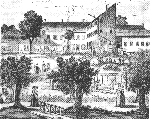
Kaiserswerth |
| "Moses was the greater man; for whereas Plato only formed a school, which formed the world, Moses went straight to work upon the world." |
1851 |
From July 6-October 7 she is again at Kaiserswerth not as a guest but as a probationer (student). As a probationer she writes her Curriculum Vitae where she talks about her sickly childhood (something she shared with Milnes) and weak wrists. She never returns home to live. |
| 1853 |
Her father gives her a yearly allowance of 500 pounds ($40-50,000 by today's standards).
FN writes "Cassandra"
March, God again spoke to FN and "asked me (FN) would I do good for him alone without the reputation." She decides to serve Him by serving the "sick poor."
FN went into residence in her first "situation" as superintendent of An Establishment for Gentlewomen During Illness at no. 1 Upper Harley Street, from August 12, 1853 to October, 1854. |

Routes to the war zone
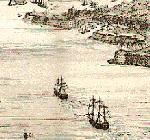
A view of Sebastopol from the sea

Hear Kenneth Landfrey blow the charge of the Light Brigade
Get VLC Media Player
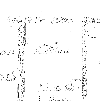
Plan of the nurses' quarters
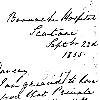
A letter from Scutari

A "polar-area" diagram |
1854 |
England, France and Sardinia come to the aid of Turkey against Russia: The Crimean War.
God speaks again to FN.
October: through the first war correspondents, the public learns of needs of wounded soldiers. Sidney Herbert, as Secretary at War, asks her to go nurse British soldiers. She assembles a party of 38 nurses, makes them sign contracts, gives them uniforms, and goes to Scutari in Turkey to the Barrack Hospital. This is her opportunity, her grand experiment, to show the value of female nurses in military hospitals. Assured of abundant supplies and splendid facilities, her nurses walk into horror. There is nothing. Doctors' resistance is broken down by the sheer enormity of the calamity. The day after they arrive, the Hospital begins receiving the wounded from the Battle of Inkerman.
At around the same time, Mary Seacole sets up a nursing facility independently.
Flo emerges a heroine to the troops and public back home. She is the subject of songs and poems. |
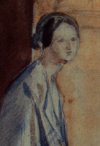
FN on the eve of her departure

The Barrack Hospital today
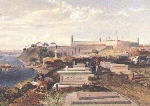
The graveyard near the Hospital
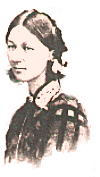
FN on her return from the Crimean
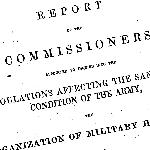
The Commission's report
"You can arrest in some degree the course of the knave, but with the
fool you don't know where you will find him next." |
| 1855 |
FN becomes ill with Crimean Fever (brucellosis?) Parthenope writes book about her pet owl and sends it to her. |
| 1856 |
July, the war is over, the last patients and nurses leave. Florence goes home to Lea Hurst. She is given many gifts and thank you letters for her service in the Crimean.
Upon request she visits Queen Victoria and Prince Albert to talk about her war experiences. They agree upon a need to correct wrongs. |
| 1857 |
May, the government issues a warrant to establish a "Royal Commission" to investigate the disasters of the Crimean War. This was a kind of independent, high-level committee appointed to look into a problem and recommend changes. Women are not allowed to be on the commission or testify so because she alone knows all, she writes and compiles facts about the war and sends it all to the commission.
The Sepoy Rebellion in India calls her attention to sanitation problems in India and she begins a life-long project to sanitize the country.
This is the beginning of her illness, posttraumatic stress disorder (PTSD). After this period (of collecting facts for the commission) she is reclusive, mostly bed ridden and only sees people by appointment, one at a time. After her return from the Crimean War she never made a public appearance, never attended a public function, never issued a public statement.
To help her "sell" her ideas she invents graphs (the "polar-area" diagram), charts and tables which she uses in her notes on the Army and Hospitals. This had never been done before and is common practice now.
Sir Harry Verney proposes to FN but she declines. He then proposes to Parthenope, who accepts, and they announce their engagement in April. |
| 1858 |
Sir Harry Verney and Parthenope are married at Embley Park in June. They move to Claydon House, where FN is a frequent guest.
W.E.N. increases her allowance to include all her bills for food and lodging and to allow her 500 pounds besides. |
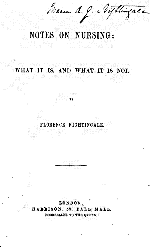
Title page of the 1859 edition
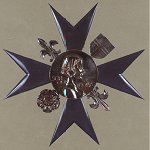
The Badge of the Nightingale Training School
"Never allow a patient to be waked, intentionally, is the sine qua non of all good nursing."
|
| 1859 |
She publishes a small booklet titled "Notes on Nursing." It is very popular. It is expanded and published again in 1860 and in 1861 with special section on taking care of babies. This book sold millions all over the world: the only "wage" she ever earned in her life was her royalties from this book. |

The lantern (or "lamp") of the period |
1860 |
June 24, The Nightingale Training School for nurses opens at St. Thomas Infirmary with Mrs. Wardroper as its head. FN pays very close attention to every detail from her flat in London. The school is a success. Florence almost single-handedly invents modern nursing as we know it today, and creates a new image of female nurses as a professional class. |
| 1861 |
August 2, Sidney Herbert dies.
God speaks for the fourth and last time to FN.
Army officials in America ask her advice on care of sick and wounded in the U.S. Civil War. She sends information to the Secretary of War and Dorothea Dix, Superintendent of Nurses for Union forces. When it looks as though England may get involved she helps the English get ready. By Christmas she is becomes very ill and it is feared she will die. She could not walk and for the next six years had to be carried from room to room. She continues to work. |
| 1862 |
She publishes her Observations concerning sanitation problems in Inda. |
| 1864 |
She works on setting up home nursing system, hospital for birth, barracks for married soldiers, hospitals for the insane and poor, helps to stop practice of putting all sick poor together: men, women, children, insane and sane. |
| 1865 |
October, FN moves to No. 35 South Street, London, later to be known as No. 10 South Street, where she lives for the rest of her life. |
| 1867 |
She works on rural hygiene, deaths in childbirth, and Indian sanitary questions. She collapses again. She finds it difficult to concentrate. |
| 1871 |
She publishes Notes on Lying In Hospitals. |
| 1872 |
Red Cross founder Henri Dunant claims Nightingale's work influenced his ideas.
Her parents have trouble coping with their two houses.
From now through 1879 she employs a secretary.
On July 18,  Bracebridge dies. Bracebridge dies. |
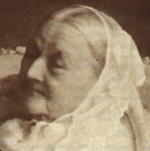
FN in her later years

FN's grave on the grounds at East Wellow
|
| 1874 |
January, her father dies. |
| 1880 |
February, her mother dies. |
| 1883 |
Sister Parthe is seriously ill with arthritis; FN takes charge. |

Hear her voice
Get VLC Media Player
About the recording.
|
1887 |
British Nurses' Association organized. |
| 1890 |
Parthenope dies.
The Edison company records her voice on a cylinder in her house on South St. It is restored and issued in 1939. |
| 1896 |
FN confined to her bedroom — this time, permanently. |

The Order of Merit
Other honors and medals
"Never to know that you are beaten is the way to victory." |
1902 |
FN can no longer read or write except with great difficulty.
She accepts the services of a companion/housekeeper/secretary. This is constant for the rest of her life. |
| 1907 |
November, King Edward VII bestows the Order of Merit on FN; it is the first time that the Order is given to a woman. |
| 1910 |
From Cecil Woodham Smith: "After February, 1910 she no longer spoke.
The end came on August 13, 1910. She fell asleep about noon and did not wake again.
In her funeral her coffin was carried by six sergeants of the British Army. Burial in Westminster Abbey was declined; she was buried in the family grave at East Wellow. Her only memorial is a line on the family tombstone "F. N. Born 1820. Died 1910." She had lived for ninety years and three months.
|



